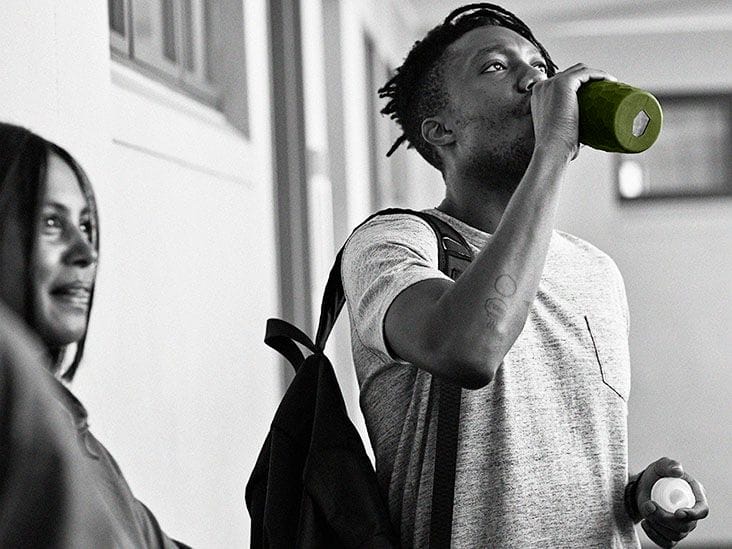
Low blood pressure: Natural remedies, causes, and symptoms – Medical News Today
Low blood pressure can cause dizziness, fainting, and other symptoms. Lifestyle changes, such as drinking plenty of fluids, wearing compression stockings, and eating more salt, may help raise blood pressure.
In some situations, natural solutions can raise low blood pressure and relieve some of the symptoms that accompany it. In other cases, intervention in the form of medications and therapies may be necessary to raise blood pressure to a healthy level.
This article explains low blood pressure, natural ways to raise it, how to recognize low blood pressure, and when to speak with a doctor.
Healthcare professionals measure blood pressure using millimeters of mercury (mmHg). Low blood pressure or hypotension is any reading lower than
However,
Low blood pressure is not a concern if there are no symptoms present. However, when low blood pressure causes symptoms, it can be a sign that not enough blood is getting to the organs.
If this happens for too long, it can cause serious consequences, including:
Healthcare professionals may suggest natural ways and lifestyle changes to raise low blood pressure, including the following options.
Contrary to popular advice, low sodium diets are not suitable for everyone with blood pressure problems.
People with low blood pressure should consider increasing their sodium intake moderately to help raise blood pressure. A healthcare professional can help someone ensure they are getting the right amount of salt.
People could include the following salty foods in their diet:
However, people should be careful not to consume too much salt, which
Alcohol can lower blood pressure
Low blood pressure
If symptoms of low blood pressure begin after starting a new medication, people should discuss the symptoms with their doctor.
Crossing the legs while sitting
For people with low blood pressure symptoms, crossing the legs may help increase blood pressure with minimal effort.
Drinking more water
Eating smaller, more frequent meals throughout the day may help with low blood pressure.
This is because the smaller meals help prevent a drop in blood pressure associated with eating larger, heavier meals.
Compression stockings help reduce the amount of blood that gets caught in the lower legs and feet, shifting it elsewhere.
Compression stockings may also help relieve pressure and pain that occurs with varicose veins.
Sitting up or standing up rapidly can cause a sudden drop in blood pressure. This may lead to feelings of lightheadedness, dizziness, or potential fainting in people with low blood pressure.
Healthcare professionals
In these cases, the heart has not pumped enough blood through the body quickly enough to account for the sudden change in position or elevation.
Sleeping with extra pillows to elevate the head will help to prevent sudden position changes but may also promote blood flow.
Taking hot showers and baths or being in a hot environment
A
Low-stress exercise options may include:
If someone has low blood pressure due to nutritional deficiencies, eating a balanced diet to address those deficiencies may help to increase their blood pressure.
For example, deficiencies in folic acid and vitamin B-12
Low blood pressure is only a concern if symptoms exist. If there are no symptoms present, doctors may take low blood pressure as a sign of good health.
It is important for a person to understand the symptoms and learn what to look out for if their low blood pressure starts to cause problems.
There are a number of potential causes of low blood pressure. In some cases, treating the underlying cause may help to increase a person’s low blood pressure.
Some of the
However, low blood pressure can indicate good health if a person is not experiencing any symptoms.
Some people with low blood pressure have no symptoms. In these people, low blood pressure is generally not dangerous or concerning.
However, even showing one or two symptoms may signal a problem. Low blood pressure can cause the following:
Some people may have symptoms of low blood pressure only when standing. Usually, this is not dangerous unless positional changes cause a person’s blood pressure to drop rapidly, which may lead to fainting.
In more extreme cases, low blood pressure may lead to shock. Shock is a serious medical emergency caused by reduced blood flow throughout the body. It can damage the organs at a cellular level.
The symptoms of shock include the following:
People experiencing symptoms of shock need urgent medical attention.
Doctors typically agree that low blood pressure is only an issue if symptoms exist.
Someone with low blood pressure should be aware of possible symptoms and what medications may cause a further drop in their blood pressure when they start taking them.
Experiencing symptoms of low blood pressure can also indicate an underlying condition that may require diagnosis and treatment.
Anyone experiencing signs and symptoms of shock needs to seek immediate medical attention, as shock is a life threatening medical emergency.
People who do not respond well to natural solutions may want to ask their doctor about medications that help raise blood pressure levels.
A person may also want to consider:
Unlike high blood pressure, which doctors associate with many potential health problems, low blood pressure is often considered a marker of good health.
However, a person should be aware of the signs and symptoms of low blood pressure and talk with a doctor if low blood pressure is causing problems for them.
Low blood pressure is often asymptomatic and is not usually something to worry about. However, some people may need to take steps to increase their blood pressure.
People can eat more salt, address nutritional deficiencies, reduce alcohol consumption, and drink more water.
A healthcare professional can help to diagnose and treat any underlying health conditions that may be causing low blood pressure.
Read this article in Spanish.
Last medically reviewed on November 17, 2023
Share this article
OUR BRANDS

